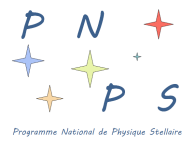Dynamo action, i.e. the self-amplification of a magnetic field by the
flow of an electrically conducting fluid, is considered to be the main
mechanism for the generation of the magnetic fields of stars and
planets. Intensive and systematic parameter studies by direct
numerical simulations using the Boussinesq approximation revealed
fundamental properties of these models. However, this approximation
considers an incompressible conducting fluid, and is therefore not
adequate to describe convection in highly stratified systems like
stars or gas giants. A common approach to overcome this difficulty is
then to use the anelastic approximation, that allows for a reference
density profile while filtering out sound waves for a faster numerical
integration. Through a systematic parameter study of spherical
anelastic dynamo models, we investigate the influence of the
stratification on the dynamo mechanisms, and compare them with
previous results obtained in the Boussinesq approximation. We discuss
the influence of the density stratification on the field geometry and
the field strength. We also show the influence of the thermal Prandtl number $Pr$.
Previous studies did not show important differences between Boussinesq and anelastic models. However, either low density contrasts or high viscous effects have been considered. We report substantial differences.
We show that dipole-dominated dynamos with a strong density contrast, are obtained only when $Pr$ is smaller than unity. For the fist time, we show the existence of such fields in Boussinesq and compressible simulations which explore Rossby numbers higer than those considered in previous studies. It seems that the dipolar component can still be the dominant component in this turbulent regime only when then Lorentz force is comparable to the Coriolis force in the first order force balance (``strong-field regime''). These results could explain recent observations.



